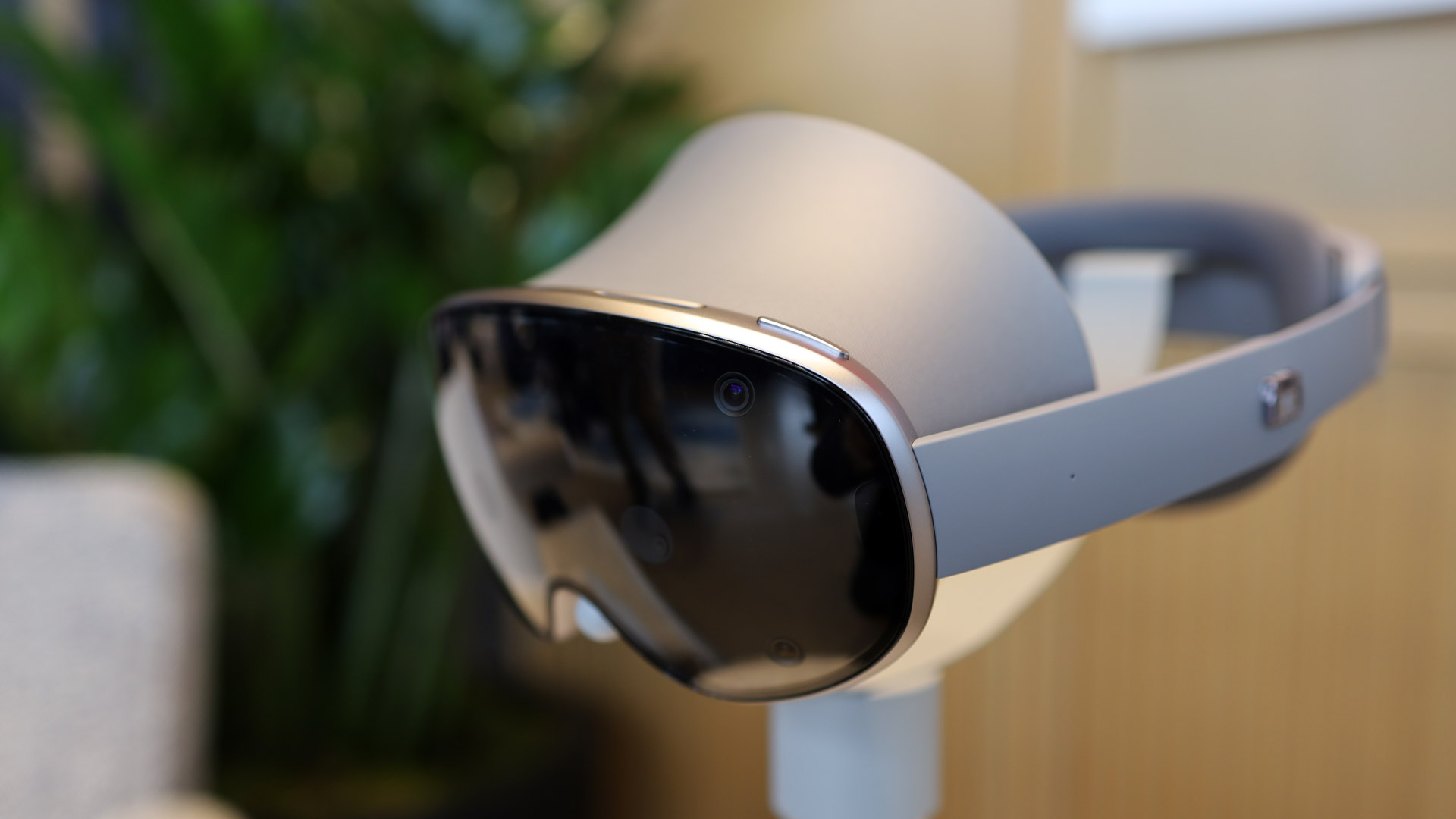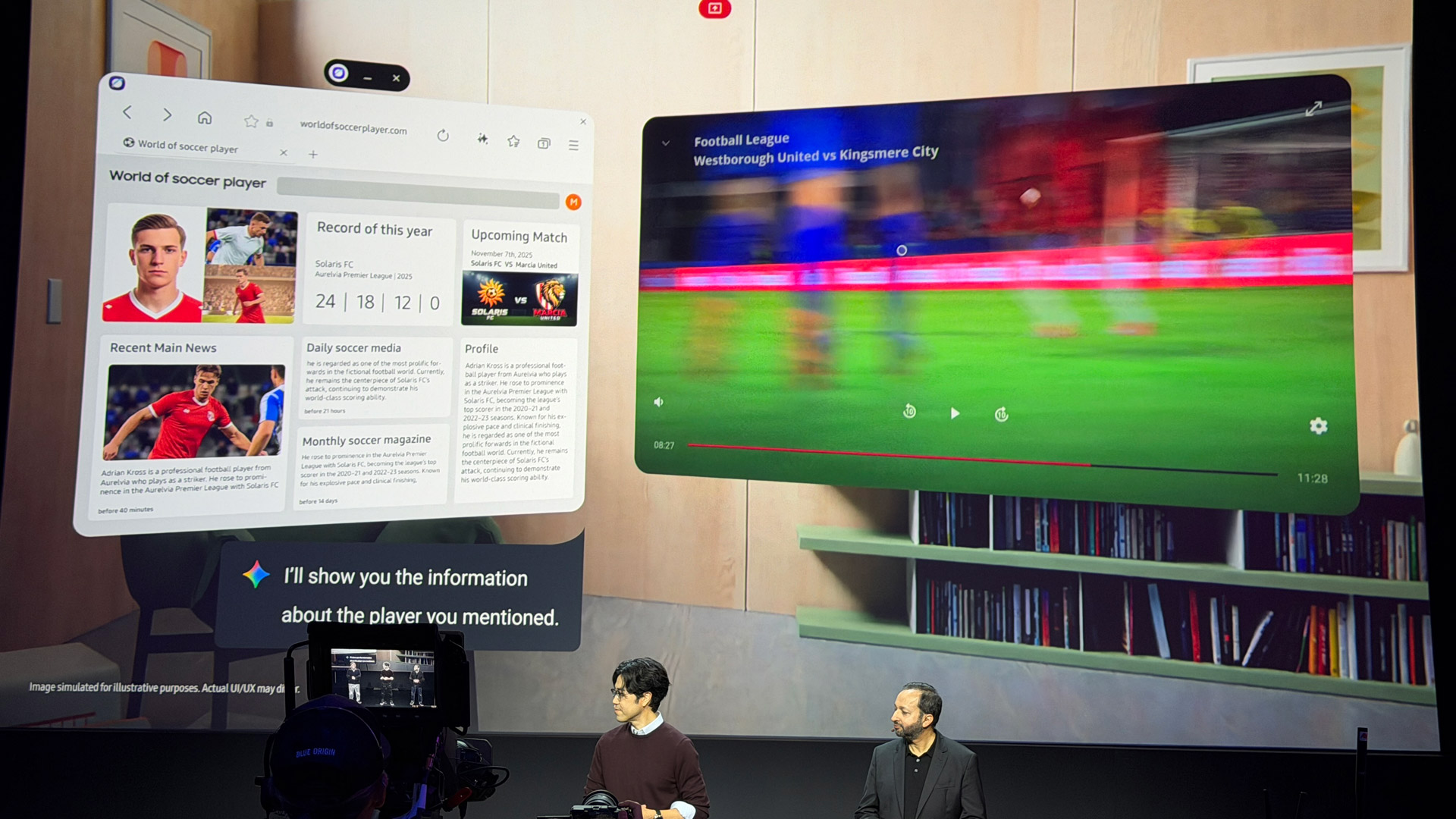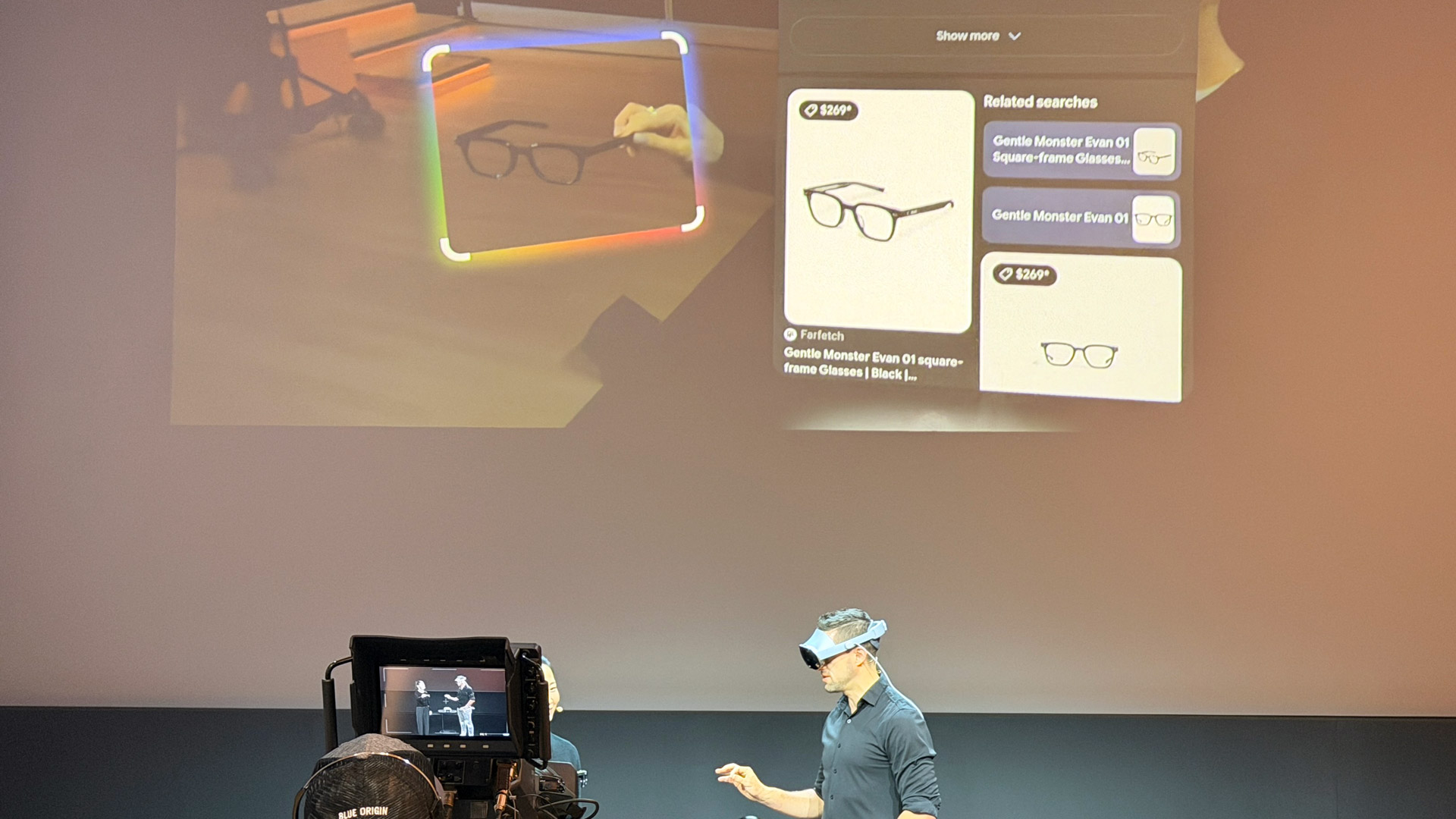Samsung Galaxy XR is as close as you can come – for now – to stepping inside AI

Well, it’s been a long time coming, but Samsung’s Galaxy XR spatial computer is finally here. Samsung unveiled it during an all-digital Galaxy event and spent plenty of time talking about its design, the experiences built around it, and, most notably, its deep integration with Google Gemini.
You can check out our full hands-on with the Galaxy XR spatial computer here; my colleague Lance Ulanoff got to take a near-final version for a spin, and I spent a few minutes with the prototype back when it was still being touted by the codename Project Moohan.
After seeing the launch and thinking back to my own hands-on, it’s pretty clear Samsung’s taking a familiar route into spatial computing – but with a twist. The big differentiator isn’t the hardware, though that’s both plenty slick and impressively lightweight at 545 grams.
No, it’s the AI layer that really stands out. And to be clear, this isn’t Galaxy AI, the set of features Samsung built for its phones. This is Google Gemini – full stop – and it’s deeply integrated into the Android XR operating system.

That matters, because Gemini isn’t just a helper sitting on the sidelines or an optional add-on. It’s baked right into the experience. So, even if you’ve never touched a mixed-reality headset before, you can strap on the Galaxy XR and literally ask Gemini for a tour.
Don’t know how to open an app or resize a window? Just ask. Stuck on something? Ask again. You don’t need to memorize gestures or menus – you can just talk to it.
Samsung’s also bundling a year of Google AI Pro with the $1,799 headset (pricing for other regions is to be confirmed), which gives you access to the full suite of Gemini features. That feels like a smart move because it means, right out of the box, the Galaxy XR gives you a complete, high-end AI experience without extra friction.
Sign up for breaking news, reviews, opinion, top tech deals, and more.
Plus, unlike, say, a smartphone that comes with a suite of AI features, the Galaxy XR headset puts you at the center of the experience, AI included. That makes it a closer fit to smart glasses, which we will one day see from Samsung too.
In effect, what you see will often be overlaid onto your real world, and you’ll see it via passthrough from the built-in array of cameras. Or you can choose to immerse yourself somewhere else, be it a fine-tuned environment or just somewhere on Google Maps Street View.
You still get the usual spatial controls, of course, including the ability to use your hands to move things around, scroll through web pages, or swipe between apps. Your eyes act as a cursor – where you look is what you select – and the headset smoothly tracks it.
But what impressed me most, even back with the Project Moohan prototype at Google I/O 2025, was the voice interaction. I was in a noisy outdoor demo space, and the built-in mics still picked up my voice clearly. Gemini responded almost instantly. The whole exchange felt natural, almost conversational – not like giving commands to a machine, even though inherently that’s what you’re doing.

Maybe one of the cooler integrations is the arrival of Circle to Search – something that I’ve loved using on smartphones – but here, as you’re scrolling the web or have myriad windows overlaid, you can simply circle to have Gemini do the hard work and use multimodal LLMs to identify whatever it is… even if it’s in the real world.
Even so, that’s kind of the point here. Samsung isn’t just making another headset to show you cool 3D visuals; it’s trying to make the interface itself feel alive and personal – one that you can engage with.
Sure, you’ll be able to watch movies and immerse yourself in content, use a full suite of Google apps with many third parties, and even connect with friends or family, but AI will be just a tap away. Plus, visuals will look vibrant and crisp thanks to high-resolution Micro-OLED 90Hz displays for each of your eyes, and powering the entire Galaxy XR headset is the Snapdragon XR2+ Gen 2 chipset.
The Galaxy XR doesn’t just put AI in front of you; it’s aiming to surround you with it – to sort of let you step inside – and I think that’s the exciting part here.
You can see our full hands-on with Samsung’s Galaxy XR headset right here, and if you’re sold, it’s up for order now at $1,799.99.
Samsung’s also tossing in a host of freebies, dubbed the “Explorer Pass,” with the purchase, including a year of Google AI Pro, YouTube Premium, and Google Play Pass, among many others.
Follow TechRadar on Google News and add us as a preferred source to get our expert news, reviews, and opinion in your feeds. Make sure to click the Follow button!
And of course you can also follow TechRadar on TikTok for news, reviews, unboxings in video form, and get regular updates from us on WhatsApp too.

Jacob Krol is the US Managing Editor, News for TechRadar. He’s been writing about technology since he was 14 when he started his own tech blog. Since then Jacob has worked for a plethora of publications including CNN Underscored, TheStreet, Parade, Men’s Journal, Mashable, CNET, and CNBC among others.
He specializes in covering companies like Apple, Samsung, and Google and going hands-on with mobile devices, smart home gadgets, TVs, and wearables. In his spare time, you can find Jacob listening to Bruce Springsteen, building a Lego set, or binge-watching the latest from Disney, Marvel, or Star Wars.
You must confirm your public display name before commenting
Please logout and then login again, you will then be prompted to enter your display name.